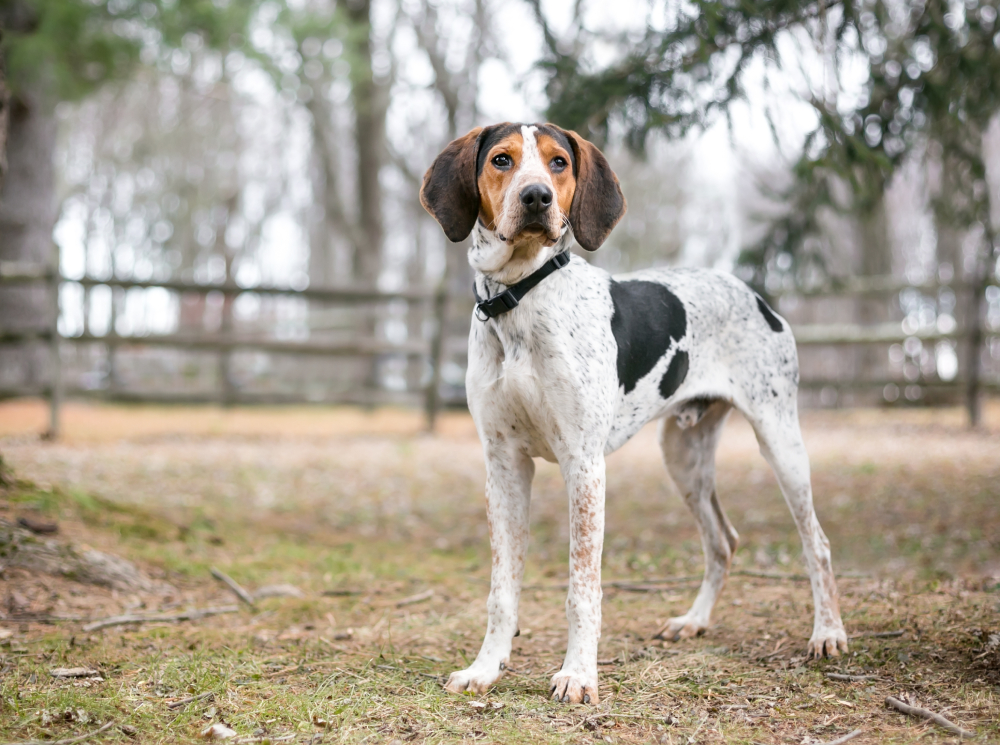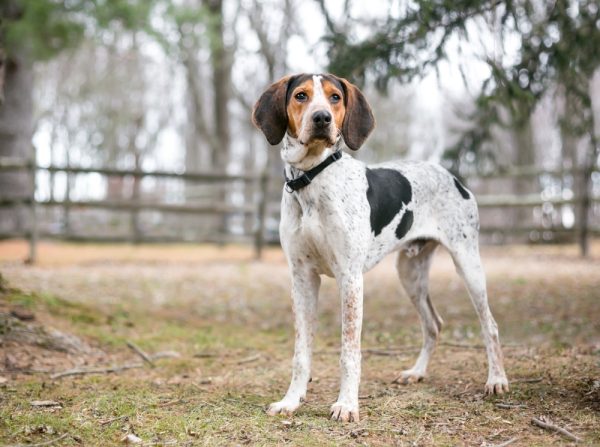Click Below to Skip Ahead
The Treeing Walker Coonhound is a relative newcomer to the canine world but was formally recognized by the American Kennel Club (AKC) in 2012 despite being known to hunters for hundreds of years. Although they’re skilled in hunting, they make exceptional pets. The Treeing Walker Coonhound is loyal and loving, and some have given them the nickname “the People’s Choice” due to their friendly behavior!
Breed Overview
Height:
20–27 inches
Weight:
50–70 pounds
Lifespan:
12–13 years
Colors:
Black, white, tri-colored
Suitable for:
Active families, outdoor adventurers, those wanting a loyal and intelligent companion
Temperament:
Loyal & loving, intelligent, easy to train, affectionate, active, very friendly
The Treeing Walker Coonhound is steeped in history despite being one of the newer breeds registered with the AKC. They were named for their remarkable skill in chasing prey into trees. Hunters adore them since they possess the perfect characteristics for the chase. However, the Treeing Walker Coonhound is intelligent and friendly too, making them a great family pet.
Treeing Walker Coonhound Characteristics
Treeing Walker Coonhound Puppies
Treeing Walker Coonhound puppies are as energetic and gangly as other large breed pups, and their large ears seem more prominent until they grow into them. These adorable pups sometimes show their trademark hunting behaviors, such as signaling, from an early age, but their keen sense of smell can sometimes distract them during training sessions.
Treeing Walker Coonhound puppies need the correct nutrition to develop into healthy adults, and high-quality food designed for puppies is ideal. Your veterinarian can help you determine how much to feed them and which brands are best.
You can purchase a Treeing Walker Coonhound from a reputable breeder or check your area’s rescue centers and shelters. Because they’re similar to others in the Hound breed group, some mixed-breed pups look like Treeing Walker Coonhounds. However, they also make excellent pets if you’re not adamant about adopting a purebred dog.
Treeing Walker Coonhound Breed Origin & History
The Treeing Walker Coonhound is an all-American canine developed in the mid-1700s in the Appalachian mountains by Thomas Walker. Walker brought an English Foxhound to Virginia back in 1742. This dog was bred with the famous Tennessee Lead, a stud dog renowned for his nose and hunting ability at the time.
Out of this pairing, the Treeing Walker Coonhound was born. By 1868, the Maupin family had refined the Treeing Walker Coonhound into a dog very similar to the modern iteration of the breed. Despite their rich heritage, the AKC did not formally recognize the Treeing Walker Coonhound until 2012!
Temperament & Intelligence of the Treeing Walker Coonhound
The Treeing Walker Coonhound is an intelligent dog with keen senses and a nose for hunting. They’re clever and easy to train but must have adequate physical and mental stimulation, or they can become destructive.
The Treeing Walker Coonhound was bred to hunt raccoons (hence the name), and active families who take the time to train them suit them best. Despite this need for action, the Treeing Walker Coonhound is renowned for their gentleness and relaxed nature at home.
However, one negative is their propensity for excessive barking! It is in the Treeing Walker Coonhound’s nature to bark at prey, and your neighbors may not appreciate the noise.
Are These Dogs Good for Families? 👪
The Treeing Walker Coonhound can be the perfect addition for families with active children. Because of their size, small children may not be the best fit for them due to the potential for accidental injuries. However, children who want to get outside and participate in their dog’s training won’t find a more loyal or loving friend.
Treeing Walker Coonhounds are affectionate with their families and relatively laid-back. In the right home, their friendly nature and trainability make them an excellent choice for families.
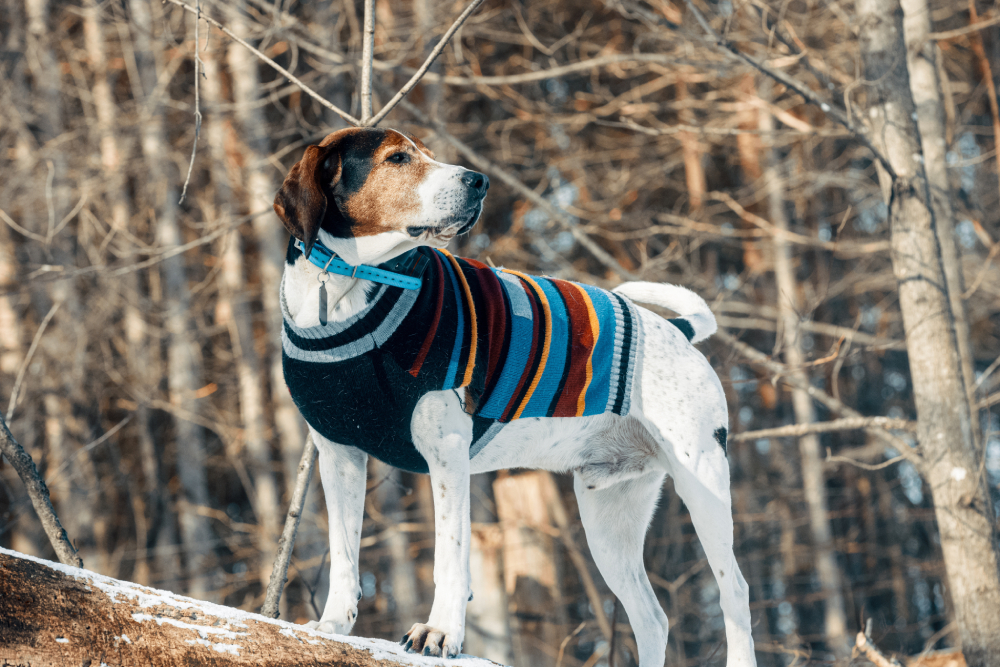
Does This Breed Get Along With Other Pets? 🐶 😽
With early socialization, owners of the Treeing Walker Coonhound can make the most of their friendly disposition at the dog park. They’re easygoing with other canines and get along with breeds of all sizes, but due to the Treeing Walker Coonhound’s size, bigger dogs may fare better with them than small ones.
Dog-savvy cats who can hold their own can be good companions, but be wary of pairing small, anxious cats with a Treeing Walker Coonhound. The urge to chase can be irresistible to them, so a cat who runs may be hounded! Small furry animals, such as gerbils or hamsters, are not the ideal roommates for Treeing Walker Coonhounds since they risk being hunted and killed.

Things to Know When Owning a Treeing Walker Coonhound
You may be interested in adopting a Treeing Walker Coonhound, but before you do, examine these characteristics first.
Food & Diet Requirements 🦴
The Treeing Walker Coonhound is an active dog that likes to be on the move, and a healthy diet is vital to their development. High-protein diets that are balanced and suitable for the dog’s size are the best, so try to buy the highest quality food you can afford.
Keeping your Treeing Walker Coonhound at a healthy weight is important since they can suffer from hip dysplasia. Any extra weight can put a strain on the joints and cause pain, so measuring food and ensuring treats are accounted for in their daily intake (especially those used for training!) is essential.
Ensure that the brand you buy for your dog has the AAFCO (Association of American Feed Control Officials) label, so your Treeing Walker Coonhound gets all the nutrients they need to be healthy.
Exercise 🐕
The Treeing Walker Coonhound was bred for hunting, and they have more endurance than many breeds. Therefore, you need to provide enough daily exercise to keep them stimulated, which is more than one short walk a day!
Long walks or hikes are the best for these athletic dogs, and they’re not the best pets for those without access to large spaces. Agility courses are an excellent exercise for them, and field trials can be the perfect outlet for their hunting prowess. Plus, you’ll see your Treeing Walker Coonhound’s natural ability on the field, allowing you to show them off!
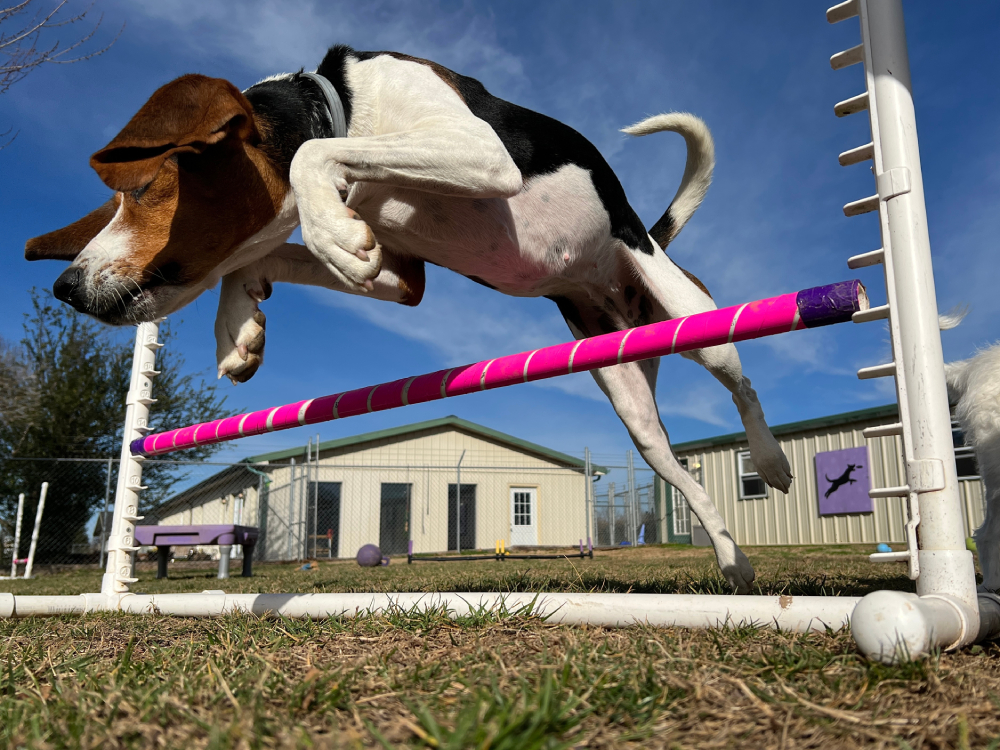
Training 🎾
This breed is intelligent, but they can be overenthusiastic and excitable. The Treeing Walker Coonhound is eager to please, so keeping their attention can be the key to consistent success when training them. Short training sessions with positive reinforcement (and treats) can keep them responsive and relaxed, but be aware that they can get distracted easily, especially by small animals in the yard. Recall training is crucial since the Treeing Walker Coonhound’s keen nose can detect far-away scents, and they can run for miles!
Grooming ✂️
The Treeing Walker Coonhound has a short and sleek coat that’s easy to groom. Brushing them once a week with a rubber brush can remove dead hair and bring nourishing oils from the skin down the hair shaft.
Because they love playing outside, they should be bathed with a canine shampoo when their coats get filthy. Otherwise, a monthly bath is all that is needed to keep a Treeing Walker Coonhound’s skin and fur in top condition.
They aren’t “hypoallergenic” and shed moderately. However, their eats must be regularly inspected and cleaned with an ear cleaner designed for dogs. Their floppy ears can trap dirt and develop ear infections. Cleaning their ears out twice a week can help prevent inflammation and infections.
Health and Conditions 🏥
The Treeing Walker Coonhound is a relatively healthy breed with only a few genetic problems. However, they are still susceptible to common health issues that all dogs can develop, so keeping them in good shape with regular checkups and vaccinations is important.
- Entropion
- Ectropion
- Ear Infection
- Dental Problems
- Hip Dysplasia
- Hypothyroidism
- Degenerative Myelopathy
Male vs Female
Treeing Walker Coonhounds do not have many differences between the sexes. Male Treeing Walker Coonhounds are typically taller and heavier than females, with males standing at 27 inches max and females standing at 25 inches.
Other than that, female and male Treeing Walker Coonhounds are similar in terms of behavior. However, neutering or spaying your dog can help reduce unwanted sexual behaviors in both sexes.
3 Little-Known Facts About the Treeing Walker Coonhound
1. They Are True Hunters
Treeing Walker Coonhounds are versatile hunters. They are used for hunting small and large prey (particularly those who hide in trees!) and can hunt on their own and in packs. Combine that with their intelligence and willingness to please, and you have the perfect hunting companion.
2. They Have Different Barks
Treeing Walker Coonhounds are known for being noisy, and they use different barks, bays, and yips to signal different things, particularly when hunting or displaying hunting behavior. When tracking prey, they bay to their owners to make them easier to follow. When their quarry is trapped up a tree, they signal the hunters with a choppy and short bark.
3. They’re a Favorite Among Hunters
The Treeing Walker Coonhound is known as “The People’s Choice” for a reason! They’re admired by hunters for their “hot” noses, which makes them more likely to abandon old (“cold”) scents in favor of fresh ones, meaning a higher chance of success in the hunt or during hunting competitions.
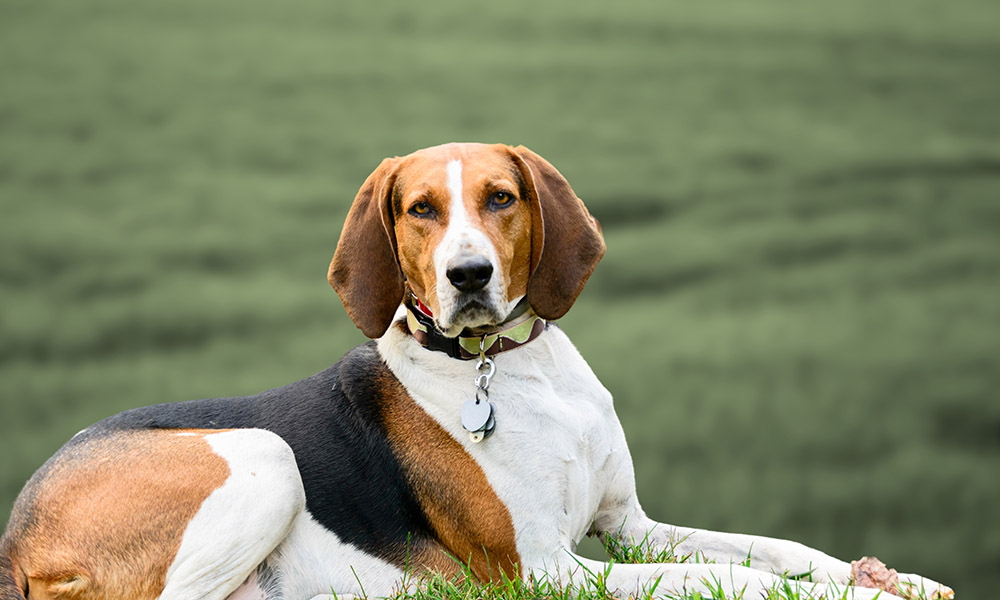

Final Thoughts
Treeing Walker Coonhounds are a firm favorite among sportsmen and families and are loved for their friendly nature and hunting vigor. They make exceptional pets, but they require an active lifestyle and suitable outdoor stimulation to keep them happy. If their needs are met, the Treeing Walker Coonhound can make an amazing addition to any home.
Featured Image Credit: Mary Swift, Shutterstock

